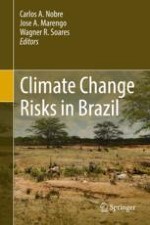2019 | OriginalPaper | Buchkapitel
4. A Review of the Health Sector Impacts of 4 °C or more Temperature Rise
verfasst von : Sandra de Souza Hacon, Beatriz Fátima Alves de Oliveira, Ismael Silveira
Erschienen in: Climate Change Risks in Brazil
Aktivieren Sie unsere intelligente Suche, um passende Fachinhalte oder Patente zu finden.
Wählen Sie Textabschnitte aus um mit Künstlicher Intelligenz passenden Patente zu finden. powered by
Markieren Sie Textabschnitte, um KI-gestützt weitere passende Inhalte zu finden. powered by
